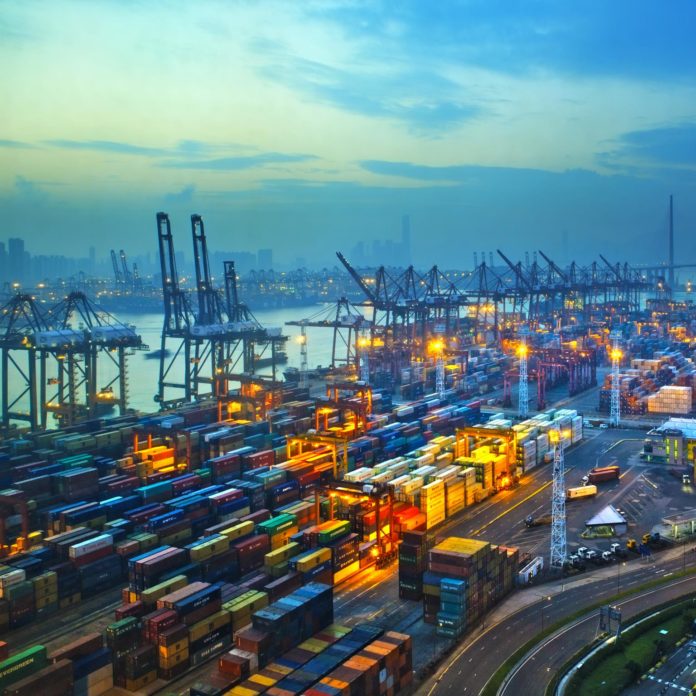The idea of an economic zone is certainly what one could call a long shot. Mostly it is dependent upon India. If India choses to allow the construction of three or even four North-South Road and rail corridors emanating from China and passing through the Himalayas and then through North-east India (Seven Sisters), to the Bangladeshi and Indian ports in the Bay of Bengal, could be a regional economic alliance in instead of becoming a political entity. More than seven decades after independence from the British who only exploited the resources of the North-eastern territories of India with the minimum necessary development. Every one of the constituent states has been in turmoil for many years. The same can be said for land-locked Bhutan and Nepal, India has given them grudging (and infrequent) access to the Indian Ocean. The Chinese Belt and Road Initiative (BRI) aims at opening up the until now inaccessible or accessible only with difficulty regions. Looking at the map and keeping in mind the history of this Asian region as well as the current forceful globalization drive connected to (but not restricted to the BRI).
With multiple political states and their political alliances and sensibilities involved, this plan is going to incur many hick-ups and, accordingly, will take time to develop. But socio-economic reasoning, i.e. helping economies along and improving the lives of the people, should be able to overcome those obstacles in the longer run. The construction of a road, rail and pipeline network that connects these areas with Bangladeshi ports of Chittagong, Chalna, Payira and Matarbari, (and the Indian port of Kolkata in West Bengal to remain of part of India) would revolutionize the economies of the eastern states of South Asia or Greater Bengal as once the Quaid envisaged. The Quaid’s vision saw it is as a possible plan in 1946 when AK Fazlul Haq, Huseyn Shaheed Suhrawardy and Abul Hashem came to him with the idea of a Greater Bengal comprising both East and West Bengal as well as Assam and the seven sisters. The British, and the Indian Congress, shot it down on an absurd technicality. While a political creation of the proposed economic zone is only a dream, things have moved quietly along in the infrastructure field.

A look at the history of road connections in the region that would serve as examples and that could be integrated into the regional network would be of help. There was apart from the Silk Road that had linked the regions of the ancient world in commerce between 130 BC-1453 AD but had then fallen out of use. During the 20th century new efforts to restore connectivity were made, this time not so much to promote trade than rather to promote warfare and troop movement. The first project was the Burma Road. With a length of 717 miles (1,154 km) it ran through a rough mountain country between Western China and Burma. The sections from Kunming to the Burmese border were built by 200,000 Burmese and Chinese laborers during the Second Sino-Japanese War in 1937 and completed by 1938. During World War II, the Allies used the Burma Road to transport materiel to China, especially after China lost sea-access following the loss of Nanning in the Battle of South Guangxi. Supplies were landed at Rangoon (now Yangon) and moved by rail to Lashio, where the road started in Burma. The Japanese overran Burma in 1942, thus closing the Burma Road for the allies. They thereafter had to supply Chinese troops by air, flying over “the Hump”, the Himalayas from India. Starting with 25 aircraft, the 10th Air Force than became an Air Force Transport Command. The final assembling of C-47 aircraft (the backbone of the air fleet) which were shipped from the US in crates was done at Panagarh, the Indian POW Camp from where I (Ikram Sehgal) escaped in 1971. This was also a base for forming the famous “Chindits” (the 77 Bde led by Brig Gen Orde Wingate) which went into Burma and disrupted Japanese Lines of Communications (LOC) to some extent.
Finally, in order to supply the Chinese troops of Chiang Kai Check in their war efforts against Japan there was a need to create a new road connection to China because for full air supply not enough airplanes were available. With Burma in the hands of the Japanese East India became the logical starting point for the new road. Being an overland connection between India and China, it was constructed under the leadership of General Josef Stilwell of the US army and later given the name of Stilwell Road. The 1726 Km long historic road was constructed by the allied soldiers lead by America during the Second World War. It started from Ledo in Assam, one of the railheads of the Bengal-Assam railway in the valley of the Upper Brahmaputra. It passed through Lekhapani, Jairampur, Nmampong and the Pangsau pass on the India-Burma (now Myanmar) border and wound up the passes of the 9000 feet high Patkai Range, then emerged at Shindwiyang and reached Mitkyina where it joined with the old Burma Road. To move supplies from the railheads to the Army fronts two more all-weather roads were constructed in record time during the autumn of 1943. With super Chinese technology in tunnel making, this makes the planned road very workable. The campaign winning Central Front Road within India from Dimapur to Imphal, and the southern road from Dohazari south of Chittagong in British India. After the war, the Stilwell Road fell into disuse. In 2010, the BBC reported that much of the road had been swallowed up by jungle.

Driven by the economic potential and the need to reinforce transport network in the region, an increasing clamour of voices in China, India and Myanmar is calling for the restoration of the road. It is time for the three countries to deliberate upon this project seriously. India is worried about the reconstruction of the road for two reasons. First, the road starts from Assam, a state where local militants have become increasingly active. Second, China-made products can flood into the Indian market through the road. Some political problems connected to the colonial distribution of territory since independence and the colonial-style attitude of successive Indian govts have led to estrangement of the Indian Northeast.
Bangladesh is actively pursuing an open-door policy to international traffic by taking advantage of its strategic location in terms of easy access to the sea and being the gateway between the Eastern and Southern parts of Asia. Accordingly, the Government has been making efforts to improve the road connectivity with neighbouring countries through various regional cooperation forums such as the South Asian Association for Regional Cooperation (SAARC), South Asia Sub-regional Economic Cooperation (SASEC), Bay of Bengal Institute for Multi-sectoral Technical and Economic Cooperation (BIMSTEC) and Bangladesh China India Myanmar (BCIM).
Bangladesh has acceded to the Asian Highway Network also known as the Great Asian Highway in 2009. This is a cooperative project among countries in Asia and Europe and the United Nations Economic and Social Commission for Asia and the Pacific (ESCAP), to improve the highway systems in Asia. It is one of the three pillars of the Asian Land Transport Infrastructure Development (ALTID) project. The project aims to make maximum use of the continent’s existing highways to avoid the construction of newer ones, except in cases where missing routes necessitate their construction.
The physical alignment of an Asian Highway Route in Bangladesh is more or less completed so far as the road connectivity is concerned. GOB has planned to upgrade almost the whole part of the Asian Highway Network in Bangladesh by phases in order to bring the same in harmony with such networks outside Bangladesh. This initiative has been taken by the GOB in connection with plans to construct two new deep-sea ports, one in Matarbari south of Chittagong and the other at Payira, located on the Ramnabad Channel near the Bay of Bengal. Both are under-construction deep-sea ports and supposed to go into business by 2025.
Contributed by:

Former Professor of South Asian Studies, Humboldt University, Berlin and Editor of the Defence Journal and a Consultant to Pathfinder Group).





